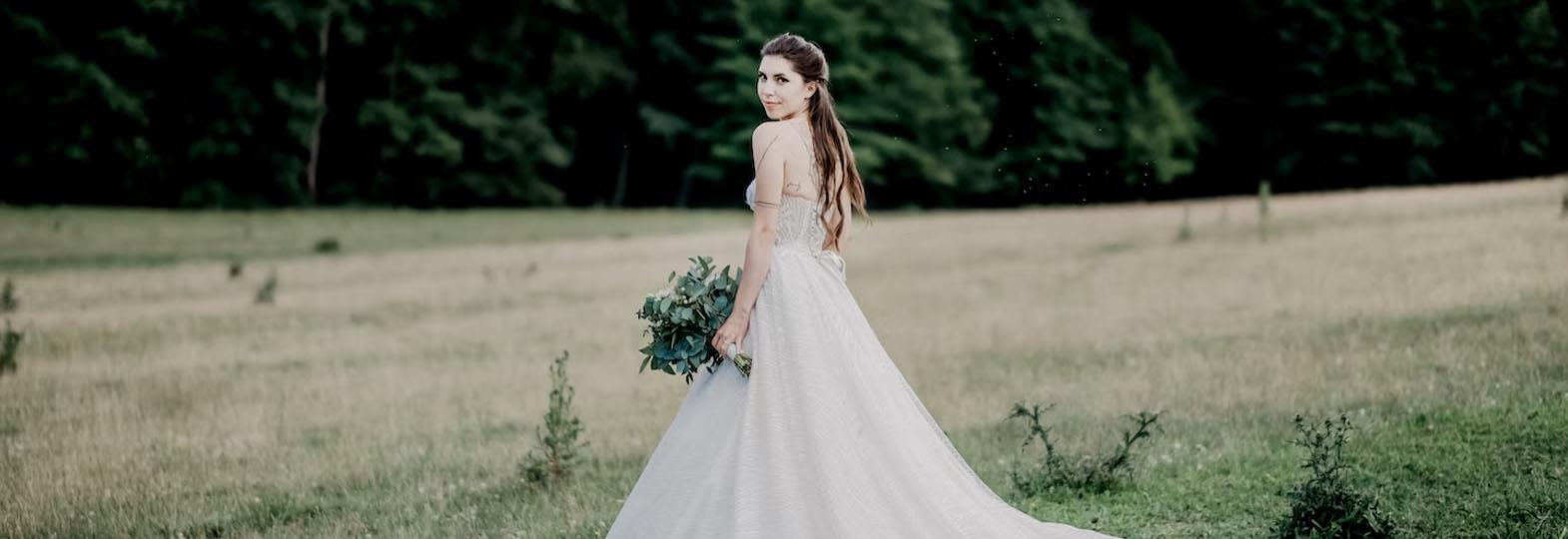Designing and wearing eco-friendly clothes doesn’t simply mean wearing clothes that are made from a particular material and avoiding clothes that are made from others. There’s a lot of other factors involved in it, and you’ll be able to contribute to the environment simply by making some decisions that others generally overlook.
The wedding gown is one of the most important aspects of a wedding that the bride is likely to spend all her time planning and selecting. There are so many different models and types that simply narrowing down on a style that you like can feel like a task. Once that’s done, it’s followed by hours of fitting and trials until the dress fits you like a glove on your wedding day.
However, creating an environmentally friendly gown is not going to take more time or money than going for a regular gown, if you keep some key factors in mind when making decisions. Here, we’re going to help you figure out how your gown can be eco-friendly and be a blessing to you and the environment.
Let’s get started
1. Choose the right material
The first and most important step is in choosing the right material; this is because most wedding gowns are made from synthetic materials to make it easier for the gown to flow and move around. However, synthetic materials are extremely bad for the environment, not just because they are non-biodegradable but also because there are a lot of pollutants that are released into the world when they are produced.
However, materials like cotton, hemp, linen, and silk are far better for both the skin and the environment. Even if you don’t want to wear pure cotton on silk (since one would be too stiff and the other too flowy), you can always find materials that are mixed to produce the right stiffness, structure, and feel.
2. Recycle parts of your wedding gown
For the past few decades in the 21st century, women have been obsessed about making sure that everything that they wear on their wedding day is brand new. However, it doesn’t need to be this way, since it’s just a social norm that people gave into in recent times.
However, simply finding ways to reuse old pieces that already exist can do wonders for the environment, since you wouldn’t have to constantly be churning out new pieces of material, which in turn will save water and also cut down on other costs and pollutants that happen due to production.
For instance, there are amazing vintage veils you can find in numerous stores that are not only budget-friendly but unique and one-of-a-kind. What’s more, you can always customise it by adding your own touches to it, whether it’s in the form of embroidery, beads, or anything else.
Additionally, this will make it stand out from the other veils since it will have a vintage and modern touch to it, which is hard to find.
It will also make for a great photograph that you can add to your wedding collection, creating a wedding photo book that not only captures the big moments (like the moment you say “I do” but also the tiny details will go a long way in preserving your special memories).
3. Choose natural dyes for your materials
Natural dyes have a certain charm to it that you simply can’t get from artificial colours. Even though the tones are muted, the colours definitely stand out as natural when compared to other colours. This will make sure that your wedding colours are easy on the eyes, especially if you’re having an outdoor wedding.
By using natural colouring and dyeing methods, you’ll be cutting short on tonnes of water pollution which may have otherwise taken place.







Comments